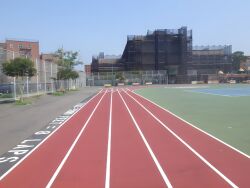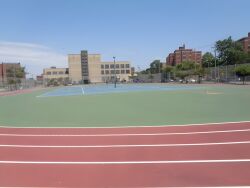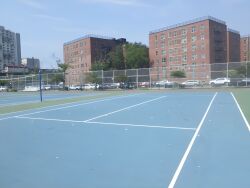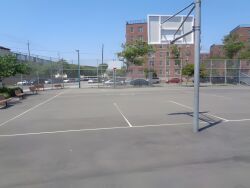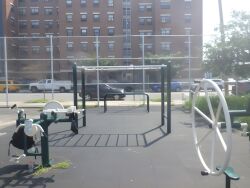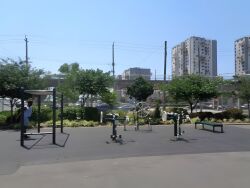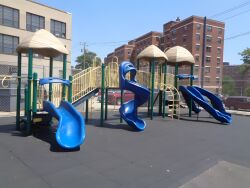Cardozo Playground
Cardozo Playground
This playground and the neighboring J.H.S. 198 are named for Benjamin N. Cardozo (1870-1928), a United States Supreme Court Justice and native New Yorker. An eminent figure in the legal community, Cardozo spent most of his career in New York before being appointed to the United States Supreme Court by President Herbert C. Hoover (1874-1964) in 1932.
Benjamin Cardozo was born into a prestigious Sephardic Jewish family and enjoyed an untarnished professional reputation despite previous family scandals. Cardozo’s father, Albert J. Cardozo, was a New York Supreme Court justice who was forced to resign under threat of impeachment in 1872, because of his Tammany Hall connections.
Educated at Columbia University, Benjamin Cardozo was admitted to the New York Bar in 1891 and became a highly successful trial attorney. He was elected to the State Supreme Court as a Reform candidate in 1913 and a year later was appointed to the state court of appeals, the highest state tribunal in New York State. Elected chief judge of that court in 1926, Cardozo continued to earn respect for his successful balancing of legal precedent and an understanding that the law must be able to adapt to social change.
In 1932, Cardozo left the Court of Appeals when he was appointed to the United States Supreme Court to fill the seat vacated by Justice Oliver Wendell Holmes. Cardozo was generally a liberal and often found himself at odds with the rest of the conservative court, which was engaged in striking down some of the reforms of the New Deal. His influence eventually bore fruit, however, when one of his last opinions was written for the majority upholding the Social Security Act.
Cardozo Playground is located on Beach Channel Drive between Beach 56th and Beach 57th Streets in the Queens neighborhood of Far Rockaway. The name Rockaway was probably derived from the Delaware or Chippewa Native American language words for “sandy place” (lekau akie). The region became known as Rockaway after it was colonized by prominent Europeans, including the Cornell family, during the 17th century. After a partition suit divided the plot in 1808, the parcels were sold to outsiders like the Rockaway Association, which began to build exclusive resorts in 1833. During the 1890s, a variety of amusement parks were built. In 1898, following the consolidation of the five boroughs, the Village of Rockaway Park was incorporated into New York City.
Improvements in transportation, under the direction of Parks Commissioner Robert Moses (1888-1981) in the 1930s, led to the growth of Rockaway. The completion of two bridges, the Marine Parkway Bridge in 1937 and the Cross Bay Bridge in 1939, connected Rockaway to mainland Queens and Brooklyn. Innovations in railroad service and the development of the elevated subway allowed further access to the peninsula, stimulating Rockaway’s transition from a vacation area to a neighborhood with permanent residents.
The City of New York acquired this land in April 1955, and the playground was opened in August 1957 as J.H.S. 198 Playground. The playground contains benches and a softball field for the school and the community. Commissioner Stern changed the name in 1985 to Benjamin Cardozo Playground, physically commemorating the life of a man who left an indelible mark on New York City.
Check out your park's Vital Signs
Clean & Safe
Green & Resilient
Empowered & Engaged Users
Share your feedback or learn more about how this park is part of a
Vital Park System

